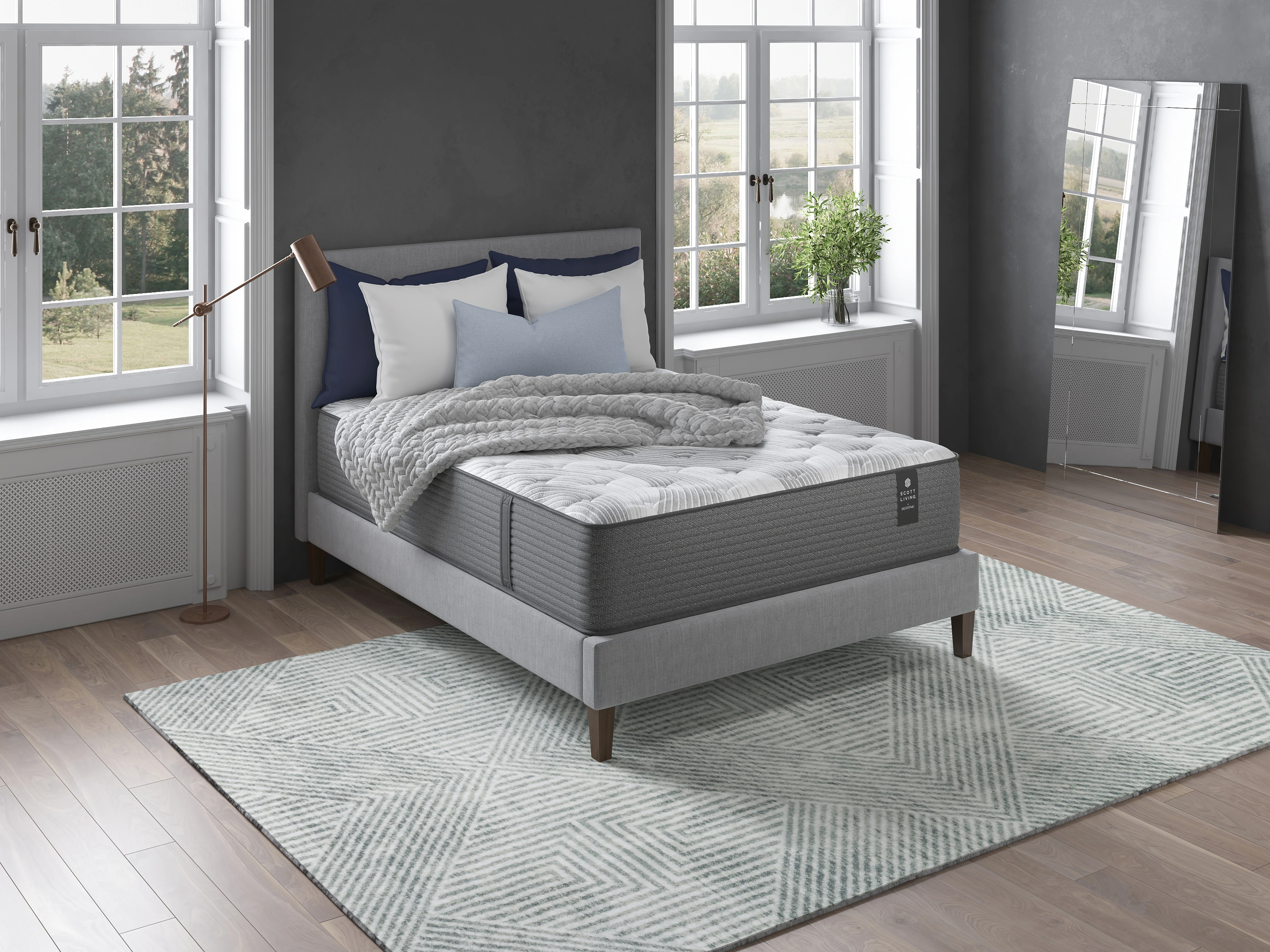All Categories
Featured
When enhancing a home, picking the best furniture style plays an essential duty in shaping the ambiance of a room. Two of the most preferred furnishings styles are modern and conventional, each with its special characteristics.
Conventional Furniture: Traditional furnishings welcomes luxuriant designs, intricate makings, and classic kinds inspired by previous historic periods. This style is rich carefully, often including curved lines, rolled arms, and attractive flourishes. Traditional furniture has an official, innovative appearance, and the emphasis gets on great workmanship. Parts frequently consist of aspects like claw-foot legs, decorative moldings, and leather upholstery, producing a luxurious, classic feel in any kind of space.
![]()
Typical Furnishings: Standard furniture is understood for its usage of abundant, high-quality materials such as strong wood, leather, and natural textiles. Conventional furniture surfaces have a tendency to be polished and dark, providing items a feeling of weight and luxury.
Standard Furniture: Traditional furniture commonly utilizes deeper, richer shades that evoke a sense of warmth and sophistication. Earthy tones like deep browns, wine reds, golds, and forest greens are generally seen in traditional furnishings. These shades include a feeling of coziness and richness to the room. Furthermore, patterns are frequently used in standard furniture, such as flower prints, stripes, or damask, adding depth and texture to the space's design.
![]()
Traditional Furniture: While convenience is crucial in conventional furniture, it is not always the primary focus. Typical furniture stresses high-end and sophistication, typically featuring cushioned seats and thick furniture.
![]()
Conventional Furnishings: Traditional furniture has a tendency to stick out more in a space as a result of its elaborate and timeless design elements. It works well in more formal settings, such as a classic living-room, a research, or a dining-room. While it can be combined with contemporary elements for an upgraded appearance, conventional furnishings normally preserves its own identification and can feel dominant within a room. This style typically flourishes in big, magnificent rooms with a feeling of splendour.
Conventional Furniture: Traditional furniture is built to last and never ever goes out of style. For house owners looking for enduring, ageless furniture that retains its value and charm, standard items are a great financial investment.
Final thought. Inevitably, the choice in between modern and typical furnishings comes down to your personal preferences and the kind of atmosphere you wish to create in your house. Contemporary furnishings is sleek, useful, and versatile to existing trends, while conventional furnishings is classic, lavish, and focused on detailed information. By recognizing the essential distinctions between these 2 styles, you can better curate a home that reflects your taste, way of life, and the atmosphere you want.
- Style and Shape. Contemporary Furniture: Contemporary furnishings is recognized for its streamlined, minimalist styles that focus on simpleness and performance. Contemporary furnishings can integrate components from various durations, making it highly flexible.
Conventional Furniture: Traditional furnishings welcomes luxuriant designs, intricate makings, and classic kinds inspired by previous historic periods. This style is rich carefully, often including curved lines, rolled arms, and attractive flourishes. Traditional furniture has an official, innovative appearance, and the emphasis gets on great workmanship. Parts frequently consist of aspects like claw-foot legs, decorative moldings, and leather upholstery, producing a luxurious, classic feel in any kind of space.

- Materials and Finishes. Contemporary Furnishings: Contemporary furniture uses a diverse range of materials, including wood, glass, metal, acrylic, and often natural leather. While contemporary furniture does include timber, the products often tend to be lighter and much less elaborate contrasted to conventional items.
Typical Furnishings: Standard furniture is understood for its usage of abundant, high-quality materials such as strong wood, leather, and natural textiles. Conventional furniture surfaces have a tendency to be polished and dark, providing items a feeling of weight and luxury.
- Shade Palette. Contemporary Furniture: Contemporary furniture accepts neutral, understated shades, with tones like white, gray, black, and off-white typically included. These shades assist produce a large, airy feeling that permits versatility in designing. Bold accent colors are typically integrated to make a statement, such as brilliant throw cushions, rugs, or art work. The shade palette in contemporary furnishings is typically kept straightforward to enable other style components to radiate, producing a balanced and cohesive area.
Standard Furniture: Traditional furniture commonly utilizes deeper, richer shades that evoke a sense of warmth and sophistication. Earthy tones like deep browns, wine reds, golds, and forest greens are generally seen in traditional furnishings. These shades include a feeling of coziness and richness to the room. Furthermore, patterns are frequently used in standard furniture, such as flower prints, stripes, or damask, adding depth and texture to the space's design.
- Comfort and Functionality. Contemporary Furniture: Functionality is a main component of contemporary furniture. Contemporary furnishings additionally often tends to have less decoration, which permits it to mix effortlessly right into numerous kinds of areas without overpowering the area.

Traditional Furniture: While convenience is crucial in conventional furniture, it is not always the primary focus. Typical furniture stresses high-end and sophistication, typically featuring cushioned seats and thick furniture.
- Design Integration. Contemporary Furnishings: Contemporary furniture is made to fit with the patterns of the time, and as a result, it functions well in minimal and modern spaces. Since modern furniture embraces simpleness, it can likewise be integrated with even more conventional pieces to produce a diverse look.

Conventional Furnishings: Traditional furniture has a tendency to stick out more in a space as a result of its elaborate and timeless design elements. It works well in more formal settings, such as a classic living-room, a research, or a dining-room. While it can be combined with contemporary elements for an upgraded appearance, conventional furnishings normally preserves its own identification and can feel dominant within a room. This style typically flourishes in big, magnificent rooms with a feeling of splendour.
- Longevity and Timelessness. Contemporary Furniture: Contemporary furnishings, because of its link to present design trends, can occasionally really feel dated as patterns develop. Nevertheless, its tidy, minimalist aesthetic and use top quality materials often guarantee it continues to be relevant for numerous years, particularly when it concentrates on classic modernist components. While modern furnishings might not have the very same historical weight as typical pieces, it can still stand the test of time via its convenience and ongoing adjustment to brand-new trends.
Conventional Furniture: Traditional furniture is built to last and never ever goes out of style. For house owners looking for enduring, ageless furniture that retains its value and charm, standard items are a great financial investment.
Final thought. Inevitably, the choice in between modern and typical furnishings comes down to your personal preferences and the kind of atmosphere you wish to create in your house. Contemporary furnishings is sleek, useful, and versatile to existing trends, while conventional furnishings is classic, lavish, and focused on detailed information. By recognizing the essential distinctions between these 2 styles, you can better curate a home that reflects your taste, way of life, and the atmosphere you want.
Latest Posts
What Are the Top Trending Furnishings Designs This Year?
Published Jan 20, 25
0 min read
What Are the Differences In Between Contemporary and Standard Furniture Styles?
Published Jan 20, 25
0 min read
The Elegance and Flexibility of Floor Tile Flooring
Published Jan 20, 25
2 min read
More
Latest Posts
What Are the Top Trending Furnishings Designs This Year?
Published Jan 20, 25
0 min read
What Are the Differences In Between Contemporary and Standard Furniture Styles?
Published Jan 20, 25
0 min read
The Elegance and Flexibility of Floor Tile Flooring
Published Jan 20, 25
2 min read